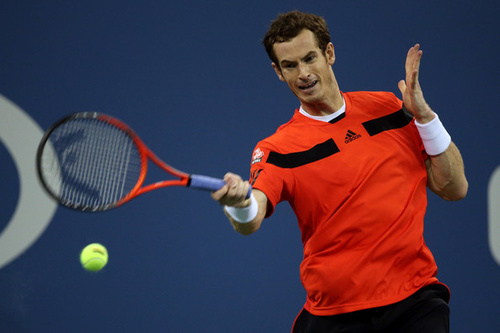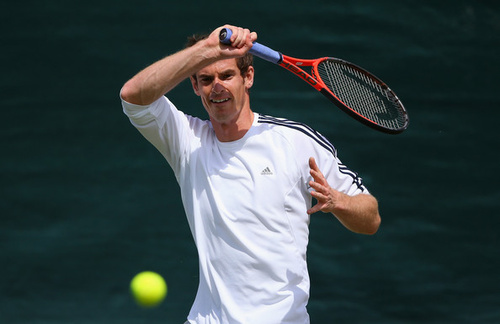Don't miss any stories → Follow Tennis View
FollowATP Predictions for 2014 (IV): Andy Murray Rebounds in Style
Australian writer Matt Tewhatu returns with his latest prediction on what the ATP might hold next year.

Matt’s fourth prediction: Andy Murray will rebound successfully from back surgery to win multiple major titles in 2014.
After becoming the first British man to win Wimbledon since Fred Perry in 1936, high expectations were held for Andy Murray heading across the Atlantic. However, after an interrupted and uncharacteristically poor US hard-court season, Murray was sidelined with a back injury. By the time that he starts his 2014 season, it will have been almost four months since a visibly discomforted Murray led Great Britain into the Davis Cup World Group in September.
While Murray attempts a comeback from this common but often debilitating injury, the world lies in wait to see just how long it takes for him to find his feet back on the ATP circuit. Considering the fitness and the physical conditioning of the world’s top 10 men, the tennis world would be remiss to suggest that he would present anything but the quality that he delivered in the first half of 2013 when the Australian Open arrives. This is why Murray not only will recover successfully from his back injury but win multiple majors in 2014 and defend his crown at Wimbledon.
Over the last decade we have seen many top-20 ranked players threatened by career-ending injuries. These range from Andre Agassi and Marat Safin, who were both forced to retire due to chronic injuries, to players who have faded from the top 20, like Mardy Fish and Janko Tipsarevic, to players inside the top 20, like Rafael Nadal and Gael Monfils in more recent times. The underlying problem facing elite tennis players is that tennis is a sport that is played on three different surfaces. And these three surfaces (hard court, clay and grass) could not be more different to each other in terms of aesthetic (ball bouncing, etc.) and physical properties (slippery, slick, etc.). These three surfaces inherently put different strains on the body which often lead to physical breakdowns and incapacitating injuries.
Professional tennis is probably the only sport that asks such unique questions of the human body. While tennis players have access to the latest advancements in sports medicine for treating injuries, such technologies have yet to eradicate the ferocity of long-term injuries. Current world No. 1 Rafael Nadal spent a mammoth eight months on the sidelines between June 2012 and February 2013 in order to recover from a knee injury that almost ruined his career. Roger Federer is another player inside the top 10 who experienced an interrupted 2013 due to injury, and Murray will need to observe their respective recovery paths in order to recover from his own.

Although Murray will be searching for some much-needed match practice before the Australian Open starts in a month’s time, he will take confidence from Nadal’s somewhat miraculous comeback from a knee injury that almost ruined the Spaniard’s career. Nadal’s last tournament in 2012 was Wimbledon where he was beaten in a five set tussle by lower ranked Czech Lukas Rosol in the second round. His next competitive match was 225 days later on clay in Vina del Mar, where he made the final. After a close loss there, Nadal went on to win six of his next seven tournaments before going on to win at Roland Garros. Granted, his return came on his favorite surface, and clay is typically easier on the knees than other surfaces. But to spend over eight months on the sideline and immediately return to the peak is a credit to Nadal and his team.
While Murray will look to emulate Nadal’s post-injury performances, his bigger challenge will lie in mentally overcoming the injury and how he and his team manage his comeback. Murray has dispelled any doubt that he possesses the skill to win the big tournaments, but he must manage his workload carefully. At the very best of times, mental resilience is one of the most demanding challenges in a professional tennis match. In Murray’s task, an added factor will be to stay mindful of his own physical reserves early in his comeback. A five-set battle early in a tournament like the Australian Open, for example, would place a heavy toll on the Scot’s body. He must ensure that his body can cope with the stresses without favoring a particular movement.
Nadal has credited his brilliant comeback to his tough decision to withdraw from the Australian hard-court season in 2013. Murray and his team will have to eventually make some tough decisions to ensure Murray’s full recovery. He is the two-time defending champion at the Brisbane tournament at the start of January, and this event is where his season is scheduled to start again in 2014. On the other hand, if his team feels that he is not entirely fit by the beginning of the tournament, he may have to make the same decision that Nadal did.
An injury such as the one experienced by the 26-year-old Scot is not easy to overcome (just ask Roger Federer or Marat Safin) so he is essentially racing the clock to be fully fit by December 29 when Brisbane starts. With a mother like Judy and a brilliant coach like immovable force Ivan Lendl monitoring every inch of his recovery, however, there is no question that Murray can win multiple majors this year provided that he is afforded every opportunity by his team and himself to successfully recover.










